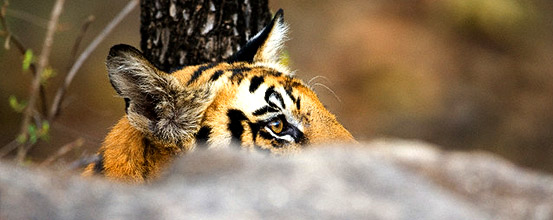» Ancient India » History of India
» Medieval India » Indian Cuisines
More About India..

» Bharatnatyam Dance
» Kathak Dance
» Kuchipudi Dance
» Odissi Dance
More Dances in India..

Rishikesh India |
Offers complete information about Rishikesh, Rishikesh City India, Rishikesh City Information, Rishikesh India, Information of Rishikesh, Rishikesh India City. |
About India » Ancient India » History of India » Medieval India » Indian Cuisines More About India.. 
Dances
in India
» Bharatnatyam Dance » Kathak Dance » Kuchipudi Dance » Odissi Dance More Dances in India.. |
 |


Wildlife
in
India » Corbett National Park » Bandhavgarh National Park » Ranthambore National Park » Kanha National Park More Wildlife in India.. 
Indian City Guide
» Agra City Guide » Delhi City Guide » Jaipur City Guide » Leh City Guide More Indian City Guides.. 
Special
Attractions in India
» Adventure in India » Ayurveda in India » Wildlife in India » Yoga in India More Attractions in India.. 
Rajasthan Tour Packages
» Fascination Rajasthan » Rajasthan Desert Tours » Rajasthan Wildlife Tours » Rajasthan Treasure Hunt More Rajasthan Packages.. 
Special Tour Packages
» Discover Kerala » Best of North India » Kerala Pilgrimage Tour » Taj Mahal Holiday More Special tour Packages.. |
Home :: City
Stopovers:: Rishikesh
Rishikesh
Rishikesh is also the gateway and the start-off point for journeys to important
religious places like Badrinath, Kedarnath, Gangotri, and Yamunotri. Rishikesh
is also acquiring greater significance as a centre for white water rafting,
other riverine sports, a base for treks and hikes in the beautiful Garhwal
Himalayas. The Triveni Ghat, in the centre of town is the most prominent bathing ghat in Rishikesh. With its modern images of Hindu deities and white sandy beach, the ghat is ideal for a dip in the holy waters of the Ganga. In the morning, pilgrims come to the ghat for prayers and offer milk and
feed the shoals of fish in the crystal clear waters. The evening, arati (worship)
with lamps is worth watching for the atmosphere. The Bharat Mandir near Triveni Ghat is reputed to be the oldest temple in Rishikesh. The temple's presiding deity is a black stone Vishnu, which is believed to have been consecrated by Adi Shankaracharya when he visited Rishikesh in the 9th century. This occasion is commemorated with special celebrations on the day of Basant Panchami, the spring festival. Swarg Ashram, with its numerous ashrams, food stalls and shops is a haunt for those looking for insights into religious themes. The newly constructed Ram Jhoola straddles the Ganga at this point. You can also make a river crossing on the ferries that run during the day. Important shrines and ashrams at Swarg Ashram include Kali Kumbliwale founded by Swami Vishudhananda, Parmarth Niketan with large statues of gods and goddesses and the Gita Bhavan with its Ayurvedic dispensary and shop selling religious books and cotton Khadi. About 2 kms upstream is the old footbridge called Lakshmanjhula, named after the brother of Lord Rama. Temples line both sides of the river at Lakshmanjhula. The Shiva and Jhoola is another suspension bridge spanning the river along the ancient route to Kedarnath and Badrinath. To the northeast is the area of Muni-ki-reti. Along the banks of the Chandrabhaga
river, this area with its secluded white sand beaches is ideal for swimming.
Boat rides on the river near Swarg Ashram are a pleasant diversion, and you
can feed the fish that cluster around pilgrims throwing balls of wheat flour
into the waters. North of Rishikesh are some good spots for white-water rafting,
including Shivpuri 18 kms upstream and Kaudiyala 38 kms up. Both the sites
are served by professional organisers who provide equipment, tents and food.
Besides the longer hauls on the Yatra route, there are shorter trek routes
around Rishikesh. Chilla
12 kms from Rishikesh, on the top of a hill is the shrine of Neelkanth Mahadev. Dedicated to Lord Shiva, the shrine commemorates the lord’s divine act of drinking the poison left over from the churning of the oceans. This made his throat turn blue, thus giving the name, Neelkanth. 38 kms. away, on the road to Badrinath shrine, is the Kaudiyala Rafters Camp. In the midst of thickly wooded slopes at 480 metres, the campsite has been promoted by GMVN for white-water rafting. Kaudiyala also offers some rock climbing sites. Some short treks around Rishikesh yield views of verdant forests and snow peaks. Following the forest track behind Swarg Ashram, you cross the spur of a hill to reach the shrine of Neelkanth Mahadev. On the way through the jungles you may come across some wildlife. 10 kms. up from Lakshmanjhula is the isolated spot of Phulchhatti. A bend in the river offers a good spot for swimming, midst huge boulders that dominate the landscape. Above Lakshmanjhula another route leads up to the shrine of Kunjapuri at a distance of 10 kms. Perched on top of a hill, the shrine is a shaktipeetha. Views from the top, of the plains and Haridwar to the south and the Himalayas to the north, are a treat. Narendra Nagar has recorded many events which have left their impact
on the town. Located 15 kms on the Rishikesh Chamba Road, the town of archaeological
importance, built by the King of Tehri Narendra Singh. The Royal palace is
worth seeing and the huge magnificent Nandi bull cannot escape your attention.
|